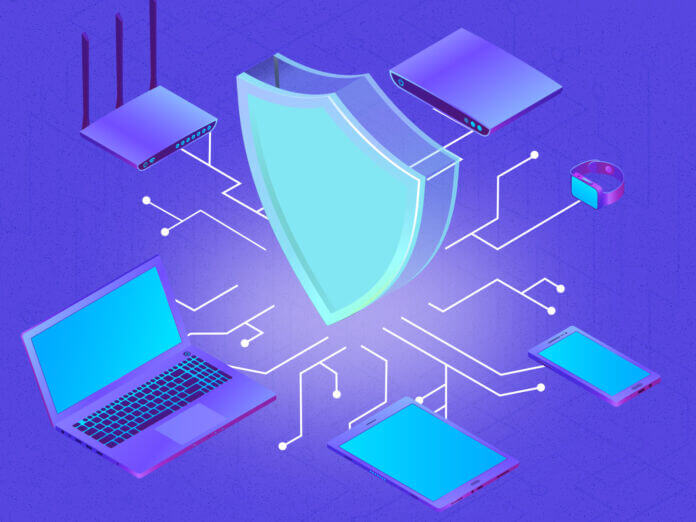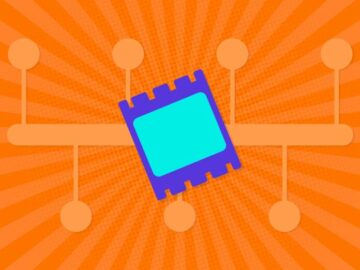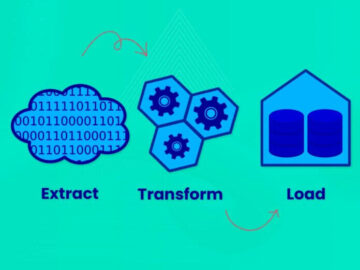
The Internet of Things (IoT) is largely unsecured — internet-connected devices are vulnerable to all kinds of cyberattacks, especially if they’re part of a large ecosystem. Since this technology relies on application programming interfaces (APIs), improving API security could be the solution developers are looking for.
What Is an API?
An API is a set of protocols and rules that define when software and applications can request and exchange data. Once the client initiates the request, it makes an API call to a server and waits for a response. Then, it transfers that information back to the client.
APIs act as the intermediary between systems, allowing them to communicate with each other. As a result, they can share data and perform predefined processes when an application sends a request.
Developers use APIs to make integrating software systems more manageable. This way, they don’t have to understand a service’s or application’s inner workings to access its features. Instead, they can utilize a simplified interface.
When someone interacts with an app, it might need to source data or initiate an action using another system. In this case, it uses APIs to send a call. The server receives and interprets this request before performing the necessary operation.
The server returns the information to the app when it finishes performing the necessary operation. At this point, it displays the information in a readable format or confirms the requested action took place.
The Classifications of APIs
There are three main classifications of APIs:
- Local APIs: This is the original API — it was created to allow communication within a system. It simplifies the traditional integration process.
- Program APIs: A program API relies on remote procedure calls (RPCs) to make off-site programs appear local.
- Web APIs: This API enables data exchanges over the internet using standard protocols like HTTP. It’s primarily used for mobile apps, web apps, and online services.
While APIs have many architectures and formats — like Simple Object Access Protocol (SOAP) and Representational State Transfer (REST) — they all fall into one of these classifications.
How Do APIs Relate to IoT?
APIs are critical for the core functioning of IoT. These devices and ecosystems are connected to each other and the internet, so they continuously request and exchange data with one another and various other systems.
IoT communication and remote operations are only possible with APIs. Without them, establishing and managing these integrations would be so time-consuming and complex that developing an IoT ecosystem wouldn’t be worth the effort in most cases.
IoT APIs are specially designed for internet-connected devices. They define protocols for sending and receiving data and commands, enabling information exchanges and predefined process initiation.
Developers use these IoT APIs to create applications that can remotely control and manage internet-connected devices. They’re what allows apps to adjust a smart thermostat’s temperature.
The Types of IoT APIs
IoT typically relies on four main types of APIs.
Internal APIs
An internal API — also known as a private API — is a company’s proprietary tool. It’s used to manage its own applications. It’s only usable by people employed at the workplace or working on a specific project.
Partner APIs
Apps often leverage these APIs to limit access to their clients or partners. Users must sign in and authenticate their identity with a key. They can’t integrate their IoT ecosystem with the platform’s servers or software services if they don’t have one.
Public APIs
These APIs are open to the public and have no access restrictions. Any developer can use them regardless of where they’re employed or if they pay for an API key. They’re not as common as internal or partner APIs.
Composite APIs
Composite APIs batch multiple requests into a single call, meaning the server receives one request, performs multiple actions, and returns one response. This is particularly useful for IoT applications where a large ecosystem must continuously exchange data.
Why API Security Is Important for IoT Security
Since IoT relies so heavily on APIs, adequate API security is critical. Internet-connected devices become more vulnerable to cyberattacks if it’s too weak — particularly volumetric distributed denial-of-service (DDoS) attacks.
In a volumetric DDoS attack, an attacker overwhelms a system with a tremendous volume of traffic. Since they can target any app accepting requests via the internet, they pose a substantial threat to IoT.
In the context of cyberattack mitigation, most internet-connected devices are already at a disadvantage. They lack basic security controls, which might be why 112 million IoT attacks occurred in 2022, up more than 80 million from 2021. Considering attack frequency is increasing so dramatically, API security has never been more important.
IoT devices have a greater chance of remaining untouched by volumetric DDoS attacks if API security is robust. Developers can use APIs to standardize data exchange protocols and control access, making cybersecurity management easier.
How to Improve API Security
There are a few ways to improve API security to ensure IoT devices remain secure.
1. Leverage Authentication Tokens
Developers can use authentication tokens to verify users’ identities. This tactic allows them to automatically enable or disable access, preventing attackers from gaining entry into a system or spamming it with malicious requests.
2. Set Traffic Throttling Quotas
Developers that throttle traffic by setting a strict, preset quota to cap it at a certain threshold prevent IoT devices from sending an overwhelming amount of API calls at once. This way, they minimize the amount of damage a volumetric DDoS attack can have.
3. Encrypt Data Exchanges
Developers should use transport layer security (TLS) — a common data exchange security protocol — to encrypt inbound and outbound information. Making requests unreadable during transit prevents attackers from tampering with or viewing data, mitigating breaches.
4. Leverage an API Gateway
An API gateway is an entry point for API calls. Developers can use it to enforce various security standards — like rate limiting and request monitoring — to prevent attackers from launching volumetric DDoS attacks.
API Security Is the First Defense Against Cyberattacks
Robust API security allows developers to safeguard IoT ecosystems from damaging cyberattacks. Simultaneously establishing encryption measures, leveraging authentication tokens, utilizing rate limiting, and setting traffic throttling quotas offers the best defense.
- SEO Powered Content & PR Distribution. Get Amplified Today.
- PlatoData.Network Vertical Generative Ai. Empower Yourself. Access Here.
- PlatoAiStream. Web3 Intelligence. Knowledge Amplified. Access Here.
- PlatoESG. Carbon, CleanTech, Energy, Environment, Solar, Waste Management. Access Here.
- PlatoHealth. Biotech and Clinical Trials Intelligence. Access Here.
- Source: https://www.iotforall.com/improving-api-security-to-protect-iot
- :has
- :is
- :not
- :where
- $UP
- 1
- 2021
- 2022
- 80
- a
- accepting
- access
- Access Protocol
- Act
- Action
- actions
- adequate
- adjust
- against
- All
- allow
- allows
- already
- also
- amount
- an
- and
- Another
- any
- api
- APIs
- app
- appear
- Application
- applications
- apps
- architectures
- ARE
- AS
- At
- attack
- attacker
- attackers
- Attacks
- authenticate
- Authentication
- automatically
- back
- basic
- BE
- become
- been
- before
- BEST
- between
- breaches
- by
- call
- Calls
- CAN
- cap
- case
- cases
- certain
- Chance
- client
- clients
- Common
- Communication
- Company’s
- complex
- connected
- considering
- context
- continuously
- control
- controls
- Core
- could
- create
- created
- critical
- Cyberattack
- cyberattacks
- Cybersecurity
- damaging
- data
- Data Exchange
- DDoS
- DDoS attack
- Defense
- define
- designed
- Developer
- developers
- developing
- Devices
- Disadvantage
- displays
- distributed
- do
- Dont
- dramatically
- during
- each
- easier
- ecosystem
- Ecosystems
- effort
- employed
- enable
- enables
- enabling
- encrypt
- encryption
- enforce
- ensure
- entry
- especially
- establishing
- exchange
- Exchanges
- Fall
- Features
- few
- First
- For
- format
- formats
- four
- Frequency
- from
- from 2021
- functioning
- gaining
- gateway
- greater
- Have
- heavily
- http
- HTTPS
- identities
- Identity
- if
- important
- improve
- improving
- in
- increasing
- information
- initiate
- Initiates
- initiation
- inner
- instead
- integrate
- Integrating
- integration
- integrations
- interacts
- Interface
- interfaces
- intermediary
- internal
- Internet
- internet of things
- internet-connected
- into
- iot
- iot devices
- IT
- ITS
- jpg
- Key
- kinds
- known
- Lack
- large
- largely
- launching
- layer
- Leverage
- leveraging
- like
- LIMIT
- limiting
- local
- looking
- Main
- make
- Making
- malicious
- manage
- manageable
- management
- managing
- many
- max-width
- meaning
- measures
- might
- million
- mitigating
- mitigation
- Mobile
- mobile-apps
- monitoring
- more
- most
- multiple
- must
- necessary
- Need
- never
- no
- object
- of
- Offers
- often
- on
- once
- ONE
- online
- only
- open
- operation
- Operations
- or
- original
- Other
- over
- overwhelming
- own
- part
- particularly
- partner
- partners
- Pay
- People
- perform
- performing
- performs
- Place
- Platforms
- plato
- Plato Data Intelligence
- PlatoData
- Point
- pose
- possible
- prevent
- preventing
- prevents
- primarily
- private
- procedure
- process
- processes
- Program
- Programming
- Programs
- project
- proprietary
- protect
- protocol
- protocols
- public
- Rate
- receives
- receiving
- Regardless
- relies
- remain
- remaining
- remote
- remotely
- request
- requested
- requests
- response
- REST
- restrictions
- result
- returns
- robust
- rules
- safeguard
- secure
- security
- send
- sending
- sends
- server
- Servers
- Services
- set
- setting
- Share
- should
- sign
- Simple
- simplified
- simplifies
- simultaneously
- since
- single
- smart
- So
- soap
- Software
- solution
- Someone
- Source
- specially
- specific
- standard
- standards
- State
- strict
- substantial
- system
- Systems
- Target
- Technology
- than
- that
- The
- the information
- their
- Them
- then
- These
- they
- things
- this
- threat
- three
- threshold
- time-consuming
- TLS
- to
- Tokens
- too
- took
- tool
- traditional
- traffic
- transfer
- transfers
- transit
- transport
- tremendous
- types
- typically
- understand
- unsecured
- untouched
- usable
- use
- used
- useful
- users
- uses
- using
- utilize
- Utilizing
- various
- verify
- via
- viewing
- volume
- volumetric
- Vulnerable
- waits
- was
- Way..
- ways
- web
- What
- when
- which
- why
- with
- within
- without
- working
- workings
- Workplace
- worth
- would
- zephyrnet












